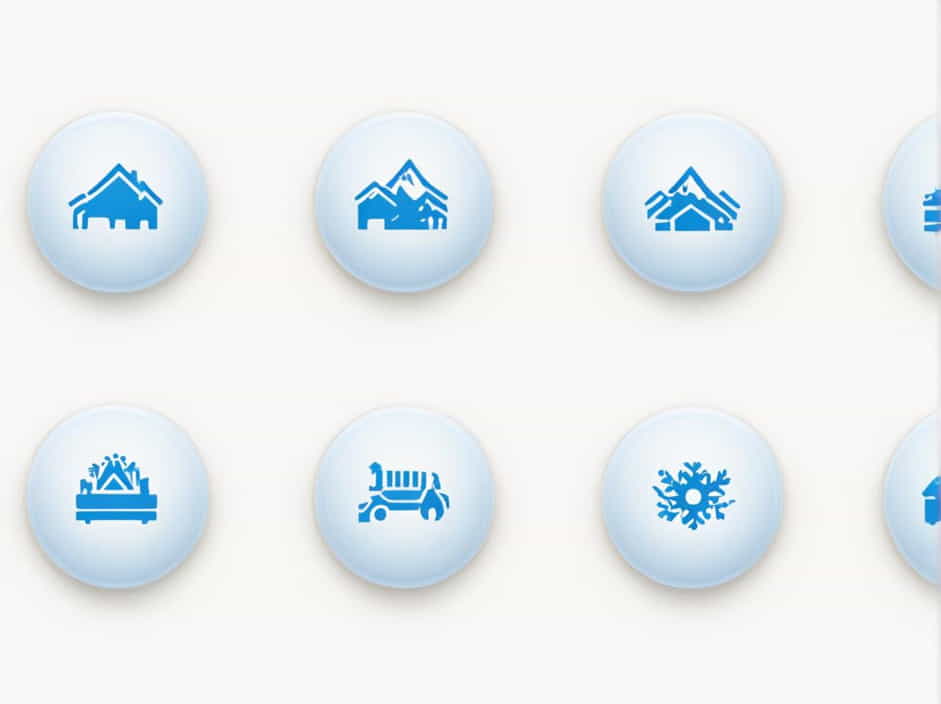Cleveland, Ohio, is well known for its heavy snowfall, particularly due to lake-effect snow from Lake Erie. The city is divided into two distinct snowbelts-the Primary Snowbelt and the Secondary Snowbelt-each experiencing different levels of snowfall depending on geography, wind patterns, and lake conditions.
This topic explores the differences between the primary and secondary snowbelts, their impact on local weather, and how residents prepare for the winter season.
1. What Is a Snowbelt?
A. Definition of a Snowbelt
A snowbelt is a region that receives heavy snowfall due to lake-effect snow, a meteorological phenomenon where cold air moves over a warmer lake, picking up moisture and depositing it as snow when it reaches land.
B. The Role of Lake Erie in Cleveland’s Snowbelts
- Lake Erie is the shallowest of the Great Lakes, meaning it freezes later in the season and remains a source of moisture for snow production.
- The prevailing winds from the northwest push snow toward Cleveland and the surrounding areas.
- The elevation of the land also contributes to snowfall, with higher elevations receiving more snow.
2. The Primary Snowbelt of Cleveland
A. Location and Geography
The Primary Snowbelt is the area that receives the heaviest snowfall. It includes:
- Eastern Cuyahoga County
- Lake County
- Geauga County
- Ashtabula County
These areas are positioned directly in the path of lake-effect snow, making them some of the snowiest places in Ohio.
B. Average Snowfall in the Primary Snowbelt
- Cities in this region, such as Chardon, can receive over 100 inches of snow per year.
- Snowstorms can bring several feet of snow in a single event, especially when Lake Erie remains unfrozen in early winter.
C. Weather Patterns and Lake-Effect Snow
- Cold air from Canada moves over the warm waters of Lake Erie.
- Moisture is absorbed and forms heavy snow bands over land.
- Snowfall is intense and localized, with whiteout conditions and rapid accumulations.
D. Impacts on Daily Life
- Frequent school closures due to heavy snow.
- Challenging road conditions requiring constant snow removal.
- High demand for winter equipment such as snow blowers and salt spreaders.
3. The Secondary Snowbelt of Cleveland
A. Location and Geography
The Secondary Snowbelt receives less snowfall than the primary snowbelt but still experiences significant winter weather. It includes:
- Western Cuyahoga County
- Summit County
- Portions of Lorain and Medina Counties
These areas are farther from Lake Erie, meaning they receive weaker lake-effect snow but can still experience heavy winter storms.
B. Average Snowfall in the Secondary Snowbelt
- Snowfall in these areas ranges from 40 to 70 inches per year.
- Snowstorms are less frequent and less intense compared to the Primary Snowbelt.
C. Weather Patterns
- Snowfall in this region comes from general winter storms rather than direct lake-effect snow.
- Winds must be strong enough to push lake-effect snow farther inland.
D. Impacts on Daily Life
- Fewer school closures compared to the Primary Snowbelt.
- Moderate road maintenance required, but less extreme conditions overall.
- Residents experience winter weather, but it is less disruptive than in the Primary Snowbelt.
4. Key Differences Between the Primary and Secondary Snowbelt
| Feature | Primary Snowbelt | Secondary Snowbelt |
|---|---|---|
| Location | Closer to Lake Erie (east of Cleveland) | Farther from the lake (west and south of Cleveland) |
| Snowfall Amount | 80-120 inches per year | 40-70 inches per year |
| Weather Influence | Direct lake-effect snow | Limited lake-effect snow |
| Storm Intensity | Frequent and heavy | Less frequent, moderate |
| Daily Impact | Severe travel disruptions, school closures | Less disruption, manageable winter conditions |
5. How Residents Prepare for Snowbelt Winters
A. Snow Removal Strategies
- Snow plows and salt trucks operate regularly in both snowbelts.
- Residents equip homes with snow blowers and shovels.
B. Emergency Preparedness
- Stocking up on food, water, and winter supplies.
- Keeping vehicles winter-ready with snow tires and emergency kits.
C. Winter Driving Tips
- Slow down and increase following distance.
- Keep extra blankets and supplies in the car.
- Avoid unnecessary travel during severe snowstorms.
6. The Snowbelt’s Impact on Cleveland’s Economy and Culture
A. Winter Tourism and Sports
- The snowbelt is home to ski resorts and winter recreation areas like Alpine Valley and Boston Mills.
- Snowmobiling and ice fishing are popular activities.
B. Economic Impact on Businesses
- Hardware stores thrive due to high demand for snow removal equipment.
- Road maintenance costs increase, especially in the Primary Snowbelt.
C. Community Adaptation
- Clevelanders take pride in handling harsh winters.
- Many events and activities are planned around winter weather conditions.
7. Climate Change and the Future of Cleveland’s Snowbelt
A. Warmer Winters and Changing Snow Patterns
- Climate change has led to shorter winters and less snowfall in some years.
- Lake Erie freezes earlier in some seasons, reducing lake-effect snow.
B. More Extreme Snow Events
- While winters may be shorter, storms can be more intense.
- Snowfall may become less predictable, causing new challenges for residents.
Cleveland’s Primary and Secondary Snowbelts create two very different winter experiences. The Primary Snowbelt, east of Cleveland, receives the heaviest snowfall, while the Secondary Snowbelt experiences milder winter conditions. These snowbelts shape the daily lives, economy, and culture of Northeast Ohio, making winter preparedness an essential part of living in the region.
With changing climate patterns, Cleveland’s winters may evolve, but for now, snowbelt residents continue to embrace the snow as part of life in Ohio.
